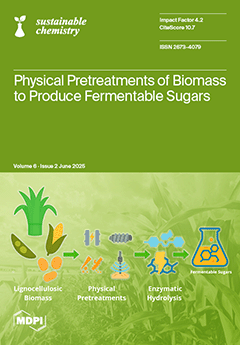Sustain. Chem., Volume 6, Issue 2 (June 2025) – 7 articles
This review explores the role of physical pretreatment methods in improving the enzymatic conversion of lignocellulosic biomass into fermentable sugars. Key techniques, such as mechanical comminution, irradiation (ultrasound, microwave, gamma rays, and electron beam), extrusion, and pulsed electric field, are critically analyzed in regards to their mechanisms, energy efficiency, and scalability. Particular emphasis is placed on the structural modifications induced by each method and their impact on hydrolysis performance. By comparing the advantages, limitations, and industrial applicability of each approach, this study provides strategic insights supporting the optimization of pretreatment selection based on biomass characteristics and processing objectives. View this paper
- Issues are regarded as officially published after their release is announced to the table of contents alert mailing list.
- You may sign up for e-mail alerts to receive table of contents of newly released issues.
- PDF is the official format for papers published in both, html and pdf forms. To view the papers in pdf format, click on the "PDF Full-text" link, and use the free Adobe Reader to open them.





